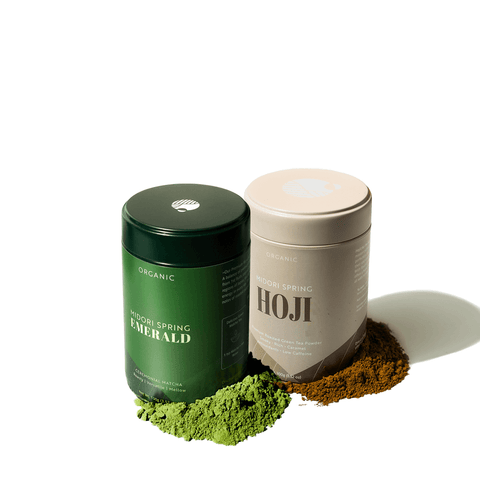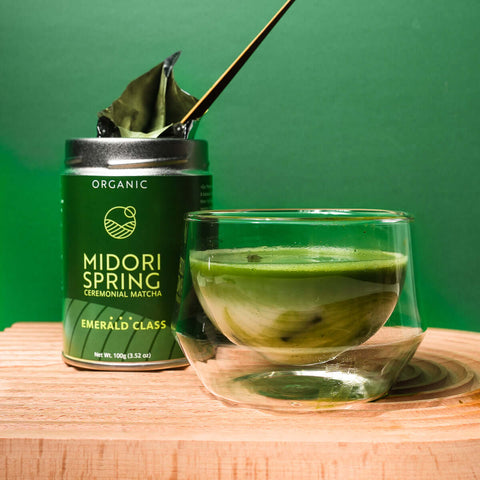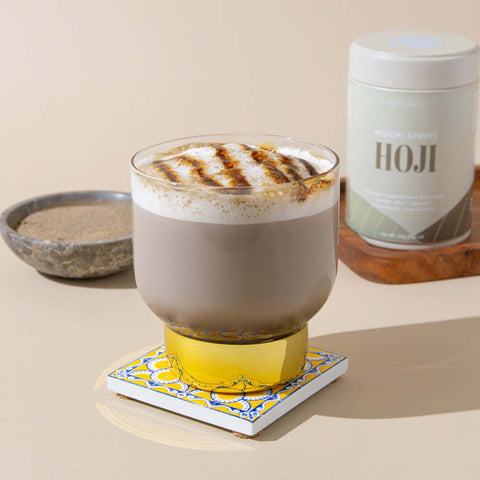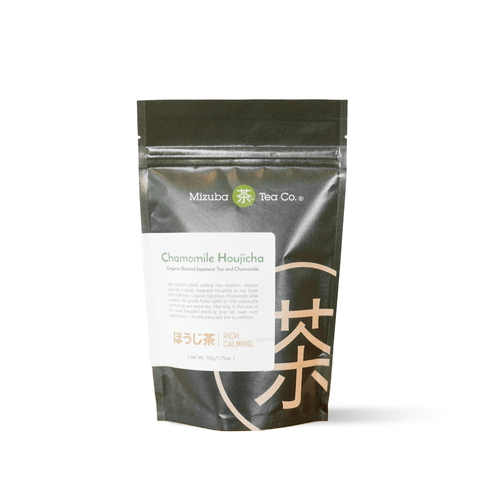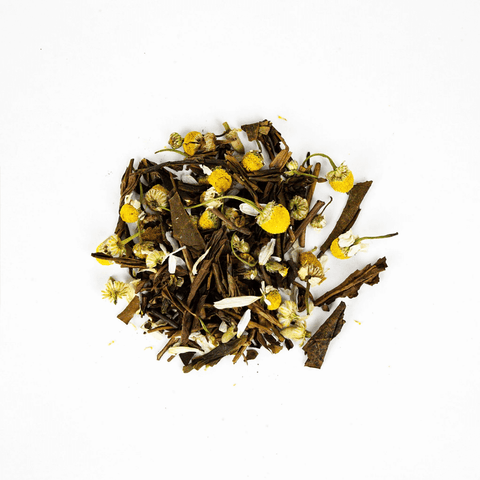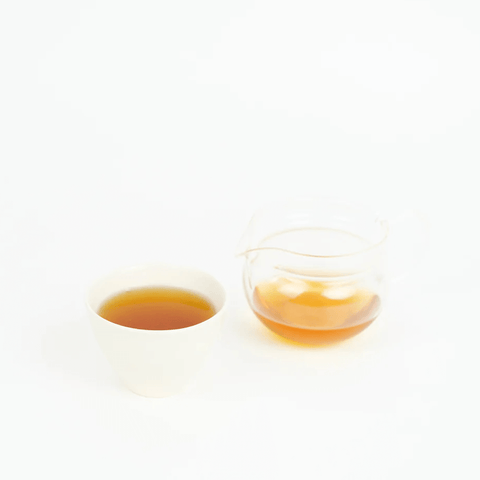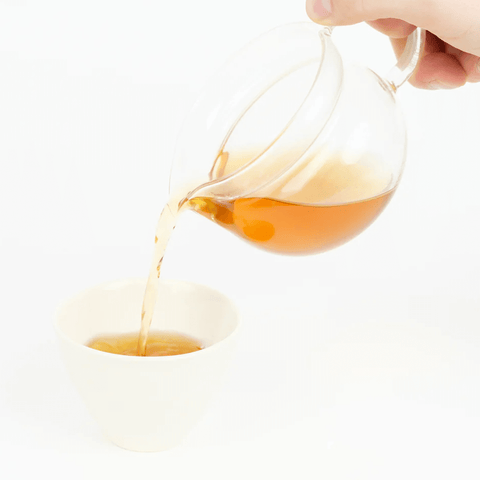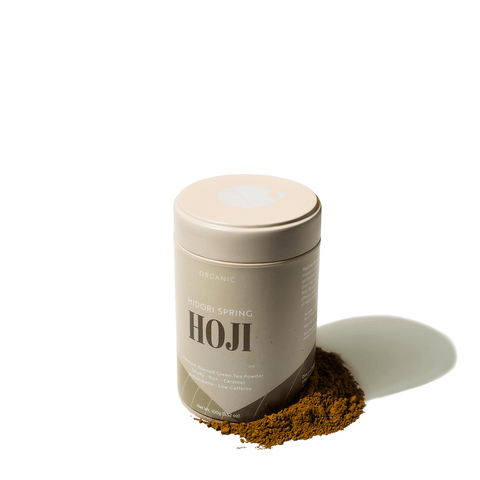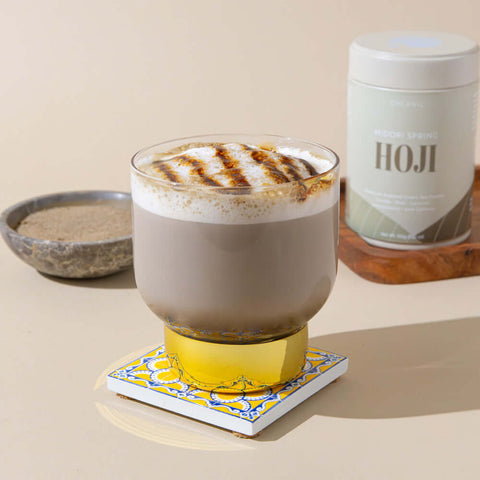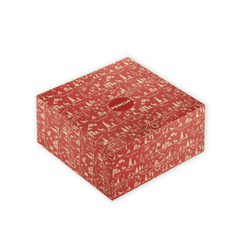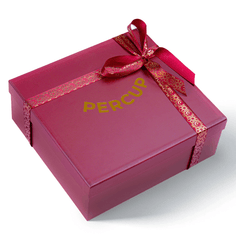Japanese teas have taken the world by storm, with matcha and hojicha stealing the spotlight for their distinct flavors and health benefits. Whether you’re a caffeine fiend or a cozy-evening sipper, these teas offer something special. But what exactly sets them apart? In this post, we’ll explore the key differences between matcha and hojicha, from taste and preparation to health perks and cultural significance. Let’s get brewing!

What is Matcha?
Matcha is the rockstar of Japanese teas, known for its vibrant green color and rich, umami-packed flavor. It’s made from shade-grown tea leaves (typically tencha) that are meticulously ground into a fine powder. Because you consume the entire leaf, matcha delivers a concentrated dose of flavor and nutrients.
• Origin: Originating in Japan, matcha has deep roots in Zen Buddhism and the traditional Japanese tea ceremony (chanoyu).
• Appearance: Bright green powder that creates a frothy, jade-colored drink.
• Flavor: Bold, grassy, slightly bitter with a creamy umami finish.
• Caffeine: High, around 35–70 mg per serving, giving you a sustained energy boost without the jitters.
Matcha is a versatile ingredient, starring in everything from lattes and smoothies to desserts like mochi and ice cream. It’s no wonder why “matcha green tea” and “matcha latte” are trending keywords among health-conscious foodies!

What is Hojicha?
Hojicha, on the other hand, is the cozy, comforting cousin of matcha. It’s made by roasting green tea leaves (often bancha or sencha) at high temperatures, which gives it a unique reddish-brown hue and a toasty flavor. This roasting process sets hojicha apart from other green teas.
• Origin: Also from Japan, hojicha was first created in Kyoto in the 1920s as a way to use older tea leaves.
• Appearance: Brown, loose-leaf tea or powder that brews into a warm, amber-colored drink.
• Flavor: Nutty, toasty, and slightly caramel-like with a smooth, low-astringency finish.
• Caffeine: Low, around 7–20 mg per serving, making it a great choice for evening sipping.
Hojicha’s warm, roasted aroma makes it a favorite for cozy nights or pairing with hearty meals. Search terms like “hojicha tea benefits” and “roasted green tea” are gaining traction as more people discover its soothing charm.

Key Differences Between Matcha and Hojicha
Let’s dive into what makes these teas unique, point by point:
• Type and Processing: Matcha is a powdered green tea made from shade-grown leaves that are stone-ground into a fine powder, preserving their vibrant green color and nutrients. Hojicha, by contrast, is a roasted green tea, typically made from bancha or sencha leaves that are heated to achieve a toasty, reddish-brown character.
• Color: Matcha’s bright green hue is a showstopper, reflecting its shade-grown origins and high chlorophyll content. Hojicha, thanks to roasting, sports a warm, reddish-brown color that’s less intense but equally inviting.
• Flavor: Matcha brings a bold, grassy, and slightly bitter taste with a rich umami kick, perfect for those who love a complex sip. Hojicha offers a nutty, toasty, and slightly sweet flavor with a smooth finish, making it more approachable for tea beginners.
• Caffeine Content: Matcha packs a punch with 35–70 mg of caffeine per serving, ideal for a morning boost or focused workday. Hojicha, with its low 7–20 mg of caffeine, is perfect for relaxing evenings or those sensitive to caffeine.
• Preparation: Matcha requires whisking with hot water (or milk for lattes) using a bamboo whisk (chasen) to create its signature frothy texture. Hojicha is simpler—steep the loose leaves or powder in hot water (around 175°F) for 1–2 minutes for a warm, comforting cup.
• Best For: Matcha shines in high-energy moments, from morning pick-me-ups to creative recipes like smoothies or desserts. Hojicha is your go-to for unwinding, pairing with meals, or enjoying a low-caffeine treat.
Taste and Aroma
Matcha’s bold, grassy flavor is like a wake-up call in a cup—perfect for those who love an intense, earthy taste. Its umami notes make it a favorite for culinary creations, from matcha brownies to smoothies. Hojicha, by contrast, is like a warm hug. Its roasted, nutty flavor and subtle sweetness make it incredibly easy to drink, even for tea newbies.
Preparation Methods
• Matcha: Traditionally, matcha is whisked with hot water using a bamboo whisk (chasen) to create a frothy texture. For a modern twist, blend it with milk for a creamy matcha latte. Pro tip: Sift the powder to avoid clumps!
• Hojicha: Typically steeped as loose-leaf tea, hojicha can also come in powder form for lattes or baking. It requires less fuss—just steep in hot water (around 175°F) for 1–2 minutes.
Health Benefits
Both teas pack a punch when it comes to health benefits, but their profiles differ:
• Matcha: Loaded with antioxidants (like EGCG), matcha supports heart health, boosts metabolism, and enhances focus. Its high caffeine content makes it a natural energy booster.
• Hojicha: Thanks to the roasting process, hojicha has lower caffeine and is gentler on the stomach. It’s still rich in antioxidants and may promote relaxation and better sleep.
If you’re searching for “matcha health benefits” or “low caffeine tea,” both teas have you covered, but hojicha is the go-to for sensitive stomachs or late-night sipping.

Which One Should You Choose?
Choosing between matcha and hojicha depends on your mood, taste preferences, and lifestyle:
• Pick Matcha If: You want a vibrant, energizing tea for mornings or workouts. It’s perfect for those who love experimenting with recipes or need a coffee alternative.
• Pick Hojicha If: You’re after a soothing, low-caffeine tea for evenings or relaxation. Its nutty flavor pairs beautifully with meals or desserts.
Can’t decide? Why not try both? Many tea lovers alternate between matcha’s bold kick and hojicha’s comforting warmth depending on the time of day.
FAQs About Matcha and Hojicha
1. Is hojicha healthier than matcha?
Both teas offer health benefits, but it depends on your needs. Matcha has more antioxidants due to consuming the whole leaf, while hojicha’s lower caffeine makes it gentler for sensitive systems.
2. Can you use hojicha powder like matcha?
Yes! Hojicha powder can be whisked into lattes or used in baking, similar to matcha, though its flavor is nuttier and less intense.
3. Does matcha or hojicha have more caffeine?
Matcha has significantly more caffeine (35–70 mg per serving) than hojicha (7–20 mg per serving), making matcha the better choice for an energy boost.
4. Can I drink hojicha at night?
Absolutely! Hojicha’s low caffeine content makes it an excellent choice for evening relaxation without disrupting sleep.
5. Where can I buy high-quality matcha and hojicha?
Look for authentic Japanese teas from reputable sources. For premium hojicha, check out Percup, which ships worldwide in just 2–4 days!
Final Thoughts
Matcha and hojicha are two sides of the Japanese tea coin, each with its own charm and personality. Matcha brings bold energy and versatility, while hojicha offers cozy, roasted comfort with less caffeine. Whether you’re whipping up a matcha latte or steeping a warm cup of hojicha, both teas are a delightful way to explore Japanese culture and elevate your tea game.
Ready to try hojicha? Shop the best hojicha powders and loose-leaf teas at PERCUP.com , where you can get premium teas shipped worldwide in just 2–4 days!









